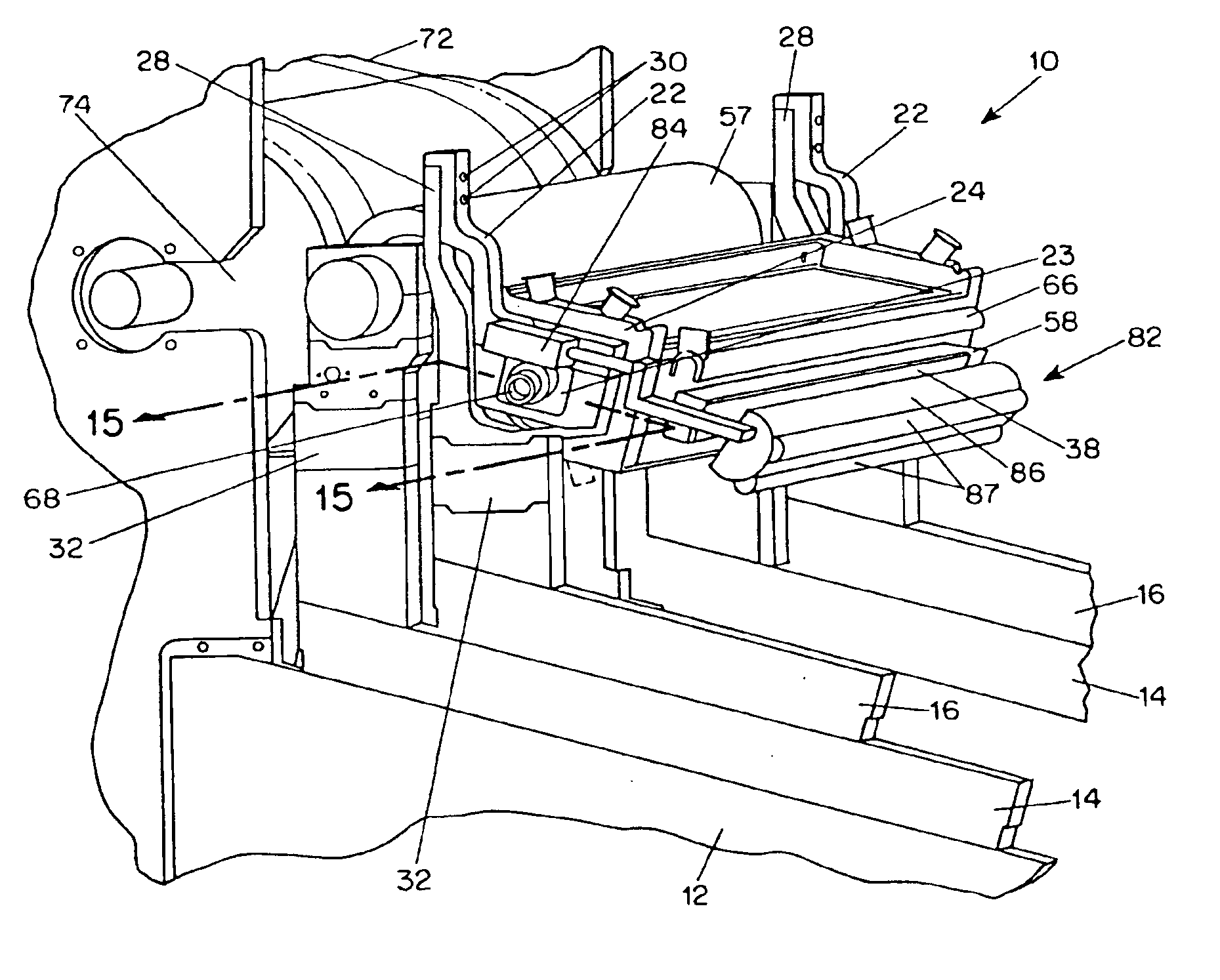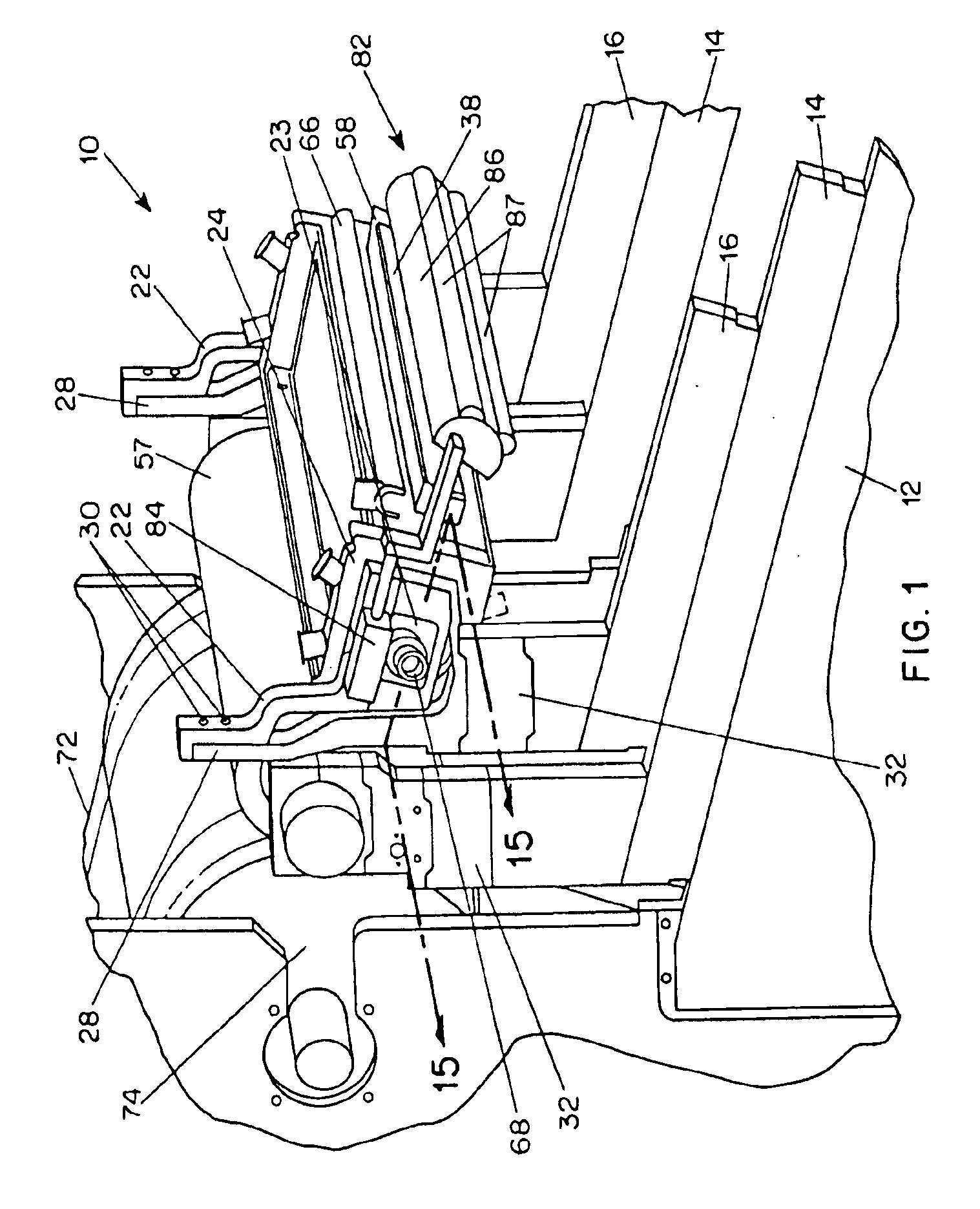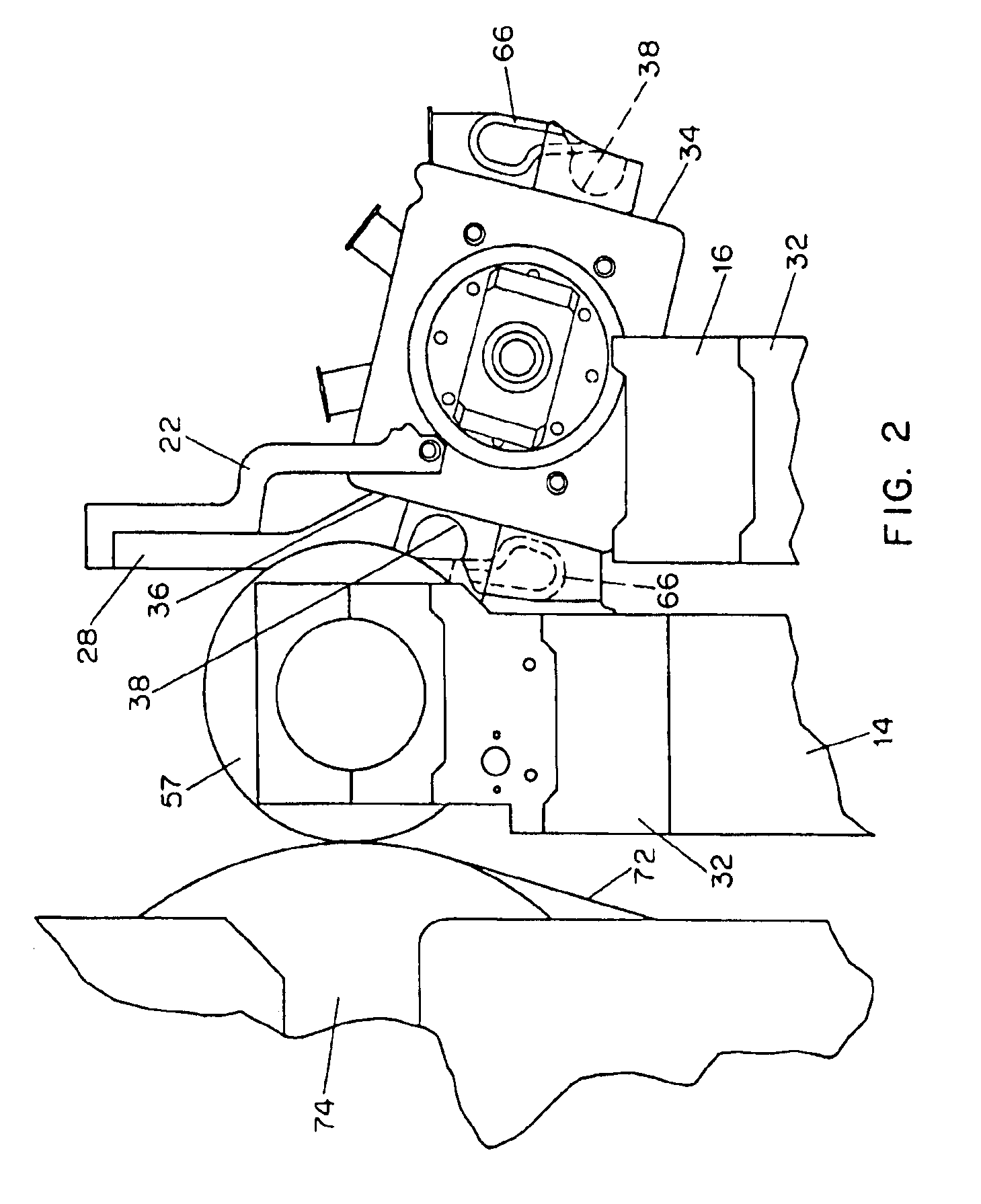Pressure feed coating application system
a technology of coating application system and pressure feed, which is applied in the direction of superimposed coating process, liquid/solution decomposition chemical coating, manufacturing tools, etc., can solve the problems of product defects, safety hazards, product defects, etc., and achieve rapid change of coatings, increased control, and wide film thickness control range
- Summary
- Abstract
- Description
- Claims
- Application Information
AI Technical Summary
Benefits of technology
Problems solved by technology
Method used
Image
Examples
Embodiment Construction
FIGS. 1-16 show a first preferred embodiment of a system 10 for coating a web of material made in accordance with the present invention. (FIGS. 10A-10C show an alternate embodiment using a different type of seal.) The system 10 includes a stationary base 12, and left and right movable roller support and nozzle support frames 14, 16 mounted on the base 12. The left and right sides of this system 10 are essentially mirror images of each other. Each of the movable frames 14, 16 is mounted on a linear bearing arrangement 18, as shown in FIGS. 6-8, and the position of each movable frame member 14, 16 is controlled by a stepper motor, as will be explained in more detail later. Left and right springs 22 are mounted on the left and right nozzle support frames 16. Mounting blocks 23 are bolted to their respective springs 22. In this preferred embodiment, the springs 22 are leaf springs, although other types of springs could be used. One end of each spring 22 is bolted onto an upwardly-projec...
PUM
| Property | Measurement | Unit |
|---|---|---|
| Angle | aaaaa | aaaaa |
| Angle | aaaaa | aaaaa |
| Length | aaaaa | aaaaa |
Abstract
Description
Claims
Application Information
 Login to View More
Login to View More - R&D
- Intellectual Property
- Life Sciences
- Materials
- Tech Scout
- Unparalleled Data Quality
- Higher Quality Content
- 60% Fewer Hallucinations
Browse by: Latest US Patents, China's latest patents, Technical Efficacy Thesaurus, Application Domain, Technology Topic, Popular Technical Reports.
© 2025 PatSnap. All rights reserved.Legal|Privacy policy|Modern Slavery Act Transparency Statement|Sitemap|About US| Contact US: help@patsnap.com



